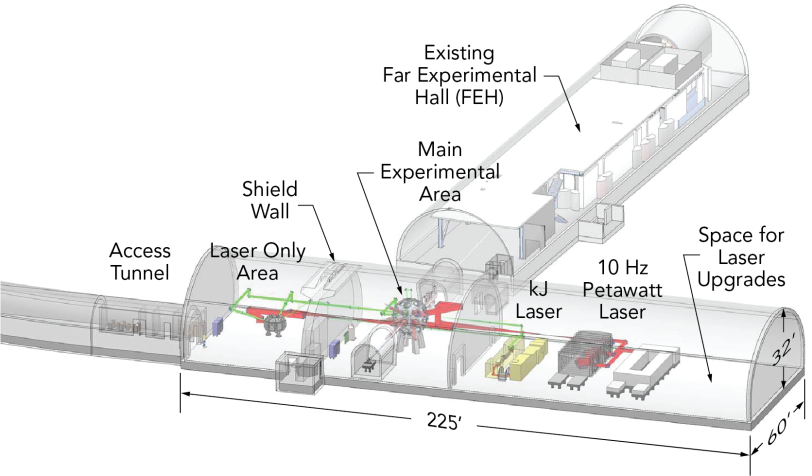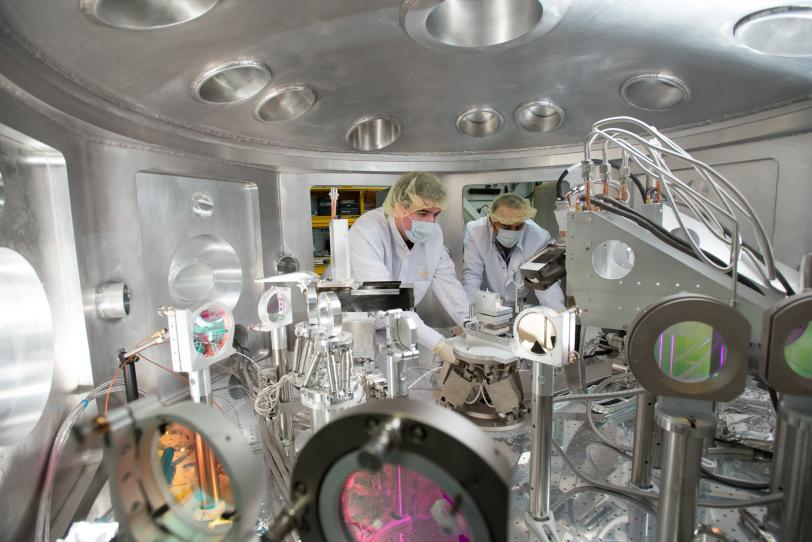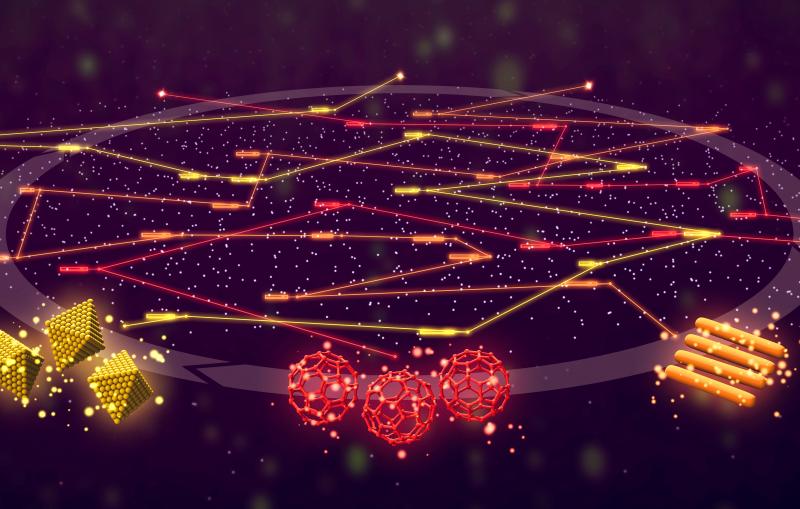Department of Energy gives green light for a flagship petawatt laser facility at SLAC
High-power lasers will work in concert with the lab’s X-ray laser to dramatically improve our understanding of matter in extreme conditions.
By Ali Sundermier and Glennda Chui
Petawatt lasers are the most powerful on the planet, generating a million billion watts to produce some of the most extreme conditions seen on Earth. But today’s petawatt lasers are standalone facilities, with limited ability to fully diagnose the conditions they produce.
A new facility at the Department of Energy’s SLAC National Accelerator Laboratory will change that. It will be the first to combine these powerful lasers with an X-ray free-electron laser (XFEL) that can probe the extreme conditions they create as never before. Coupled to the lab’s Linac Coherent Light Source (LCLS), the Matter in Extreme Conditions Upgrade, or MEC-U, promises to dramatically improve our understanding of the conditions needed to produce fusion energy and to replicate a wide range of astrophysical phenomena here on Earth.

The project got approval from the DOE Office of Science (SC) on Monday to move from its conceptual design phase to preliminary design and execution, having passed what is known as Critical Decision 1.
“It’s been gratifying to see the community rally together to support this project, and I think this achievement really validates those efforts. It shows that this notion of locating high-energy, high-power lasers next to an XFEL can now be realized,” said SLAC scientist Arianna Gleason.
“Working in concert, they’ll allow us to look behind the curtain of physics at extreme conditions to see how it’s all stitched together, opening a new frontier.”
A national opportunity
SLAC will work in partnership with Lawrence Livermore National Laboratory (LLNL) and University of Rochester’s Laboratory for Laser Energetics (LLE) to design and construct the facility in a new underground cavern. There, two state-of-the-art laser systems – a high-power petawatt laser and a high-energy kilojoule laser – will feed into two new experimental areas dedicated to the study of hot dense plasmas, astrophysics, and planetary science.
“Not only are we working with some of the leading laser laboratories in the world, but we’re also working with world experts in experimental science, high energy density science and the operation of DOE Office of Science user facilities, where scientists from all over the world can come to do experiments,” said Alan Fry, MEC-U Project Director.
Scientists started discussing what would be needed to make a quantum leap in this field in 2014 at a series of high-power laser workshops at SLAC. Three years later, a National Academies report called “Opportunities in intense ultrafast lasers: Reaching for the brightest light” highlighted the importance of this field of science. It recommended that DOE secure a key global advantage for the U.S. by locating high-intensity lasers “with existing infrastructure, such as particle accelerators.”
Building on success
This project builds on the success achieved at the existing Matter in Extreme Conditions (MEC) instrument at LCLS. Funded by DOE SC’s Fusion Energy Sciences program (FES), MEC uses short-pulse lasers coupled to X-ray laser pulses from LCLS to probe the characteristics of matter with unprecedented precision. These experiments have delivered a wealth of outstanding science and attracted worldwide media attention, with examples such as the study of “diamond rain” thought to exist on Neptune, to investigating the signatures of asteroid impacts on the Earth, to studying potential failure mechanisms of satellites due to solar flares.

The existing MEC instrument is however limited in the regimes it can access. It has only modest laser capabilities which don’t allow it to reach the conditions of highest interest to researchers. The community called for investment into a petawatt laser that can produce unprecedented light pressures and generate plasmas at the even higher temperatures found in cosmic collisions, the cores of stars and planets, and fusion devices, giving scientists access to more extreme forms of matter needed to address the most important scientific challenges identified by the broad community of scientific users.
“The new high-power lasers being designed by Livermore and Rochester are world-leading in their own right,” Fry said. “The fact that they're coupled to LCLS then really puts it over the top in terms of capabilities.”
MEC-U will also take advantage of the LCLS-II upgrade to the LCLS facility, which will provide X-ray laser beams of unsurpassed brilliance for probing those plasmas, doubling the X-ray energy that has been attainable to date.
New scientific frontiers
Access to the facility will be open to researchers from across the country and around the world, facilitated in part by LaserNetUS, a research network that is boosting access to high-intensity laser facilities at labs and universities across the country. This will allow more MEC users in a broader range of fields to use the facility, while also helping train new staff and develop new techniques.
“This new facility will lead to a greater understanding of everything from fusion energy to the most extreme phenomena in the universe, shedding light on cosmic rays, planetary physics and stellar conditions.” said Siegfried Glenzer, director of the High Energy Density Division at SLAC. “It really shows the DOE’s dedication to continue to tackle the most important and exciting problems in plasma physics.”
For questions or comments, contact the SLAC Office of Communications at communications@slac.stanford.edu.
SLAC is a vibrant multiprogram laboratory that explores how the universe works at the biggest, smallest and fastest scales and invents powerful tools used by scientists around the globe. With research spanning particle physics, astrophysics and cosmology, materials, chemistry, bio- and energy sciences and scientific computing, we help solve real-world problems and advance the interests of the nation.
SLAC is operated by Stanford University for the U.S. Department of Energy’s Office of Science. The Office of Science is the single largest supporter of basic research in the physical sciences in the United States and is working to address some of the most pressing challenges of our time.






